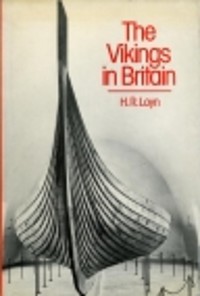Status
Available
Collection
Publication
New York : St. Martin's Press, 1977.
Description
Drawing from recent archaeological and linguistic evidence, as well as more traditional literary and narrative sources, the author distinguishes between the initial phase of migrations in the ninth and tenth centuries, and the secondary period of settlement up to c. 1100 AD. He emphasizes, too, the differences in nature and intensity of the Viking impact on the societies that were slowly developing into the historic kingdoms of England and Scotland, and the more complex political structures of Wales and Ireland. Throughout the book, the effects of the Scandinavian invasions on Britain are set within the wider European context.
User reviews
LibraryThing member setnahkt
A readable little book covering British (including Wales, Ireland, Scotland and the Isles) history from around 750 to around 1100 CE. Author Henry Loyn is heavy on textual and toponymic evidence, perhaps to the exclusion of archaeology – but I really don’t know that much about the archaeology
Where the Vikings didn’t settle, they often established trading centers (or strongholds for raiding) based on defensible mainland positions (promontories were popular, since the narrow neck could be fortified; Caithness in Scotland is an example) or on islands (Man, the Hebrides, Shetland, Orkney, and Anglesey – accord to Loyn, “Ongull’s Isle”). Shetland and Orkney were nominally under Norwegian rule (although the actual ruling families were Scots) until the 15th century, when they were pawned to Scotland to provide a dowry for a Norwegian princess. In theory, they could still be redeemed if the King of Norway could scrape up sufficient funds (I note there’s a Shetland/Orkney independence movement that uses this argument).
Good maps and references, although probably dated (published 1994). Maybe could be a few more discussions of archaeological finds and fewer examples of Norse loan words in English and Gaelic, but informative nonetheless.
Show More
of the era so I can’t say for sure. The fury of the Northmen was legendary, of course – but a lot of them came to settle rather than loot, especially in and around Yorkshire. It was interesting to discover that the term “riding” – currently used for electoral districts in Canada – comes from the Norse trithing (third), originally used to divided cumbersome counties (like Yorkshire) into smaller administrative units. The Danelaw area can still be identified on the ground by villages ending in the Norse -by rather than the Anglo-Saxon -tun, although Loyn points out what are called “Grimston” composites, where a Norse homesteader eventually got an English town named after him.Where the Vikings didn’t settle, they often established trading centers (or strongholds for raiding) based on defensible mainland positions (promontories were popular, since the narrow neck could be fortified; Caithness in Scotland is an example) or on islands (Man, the Hebrides, Shetland, Orkney, and Anglesey – accord to Loyn, “Ongull’s Isle”). Shetland and Orkney were nominally under Norwegian rule (although the actual ruling families were Scots) until the 15th century, when they were pawned to Scotland to provide a dowry for a Norwegian princess. In theory, they could still be redeemed if the King of Norway could scrape up sufficient funds (I note there’s a Shetland/Orkney independence movement that uses this argument).
Good maps and references, although probably dated (published 1994). Maybe could be a few more discussions of archaeological finds and fewer examples of Norse loan words in English and Gaelic, but informative nonetheless.
Show Less
LibraryThing member Waltersgn
The author, a professor of Medieval History at University College, Cardiff, UK, presents a thorough study of the Vikings role in the British Isles from 800 A.D. to 1100 A.D. He comprehensively chronicles the extent of the Viking's impact on England, Scotland, Ireland, and Wales.
